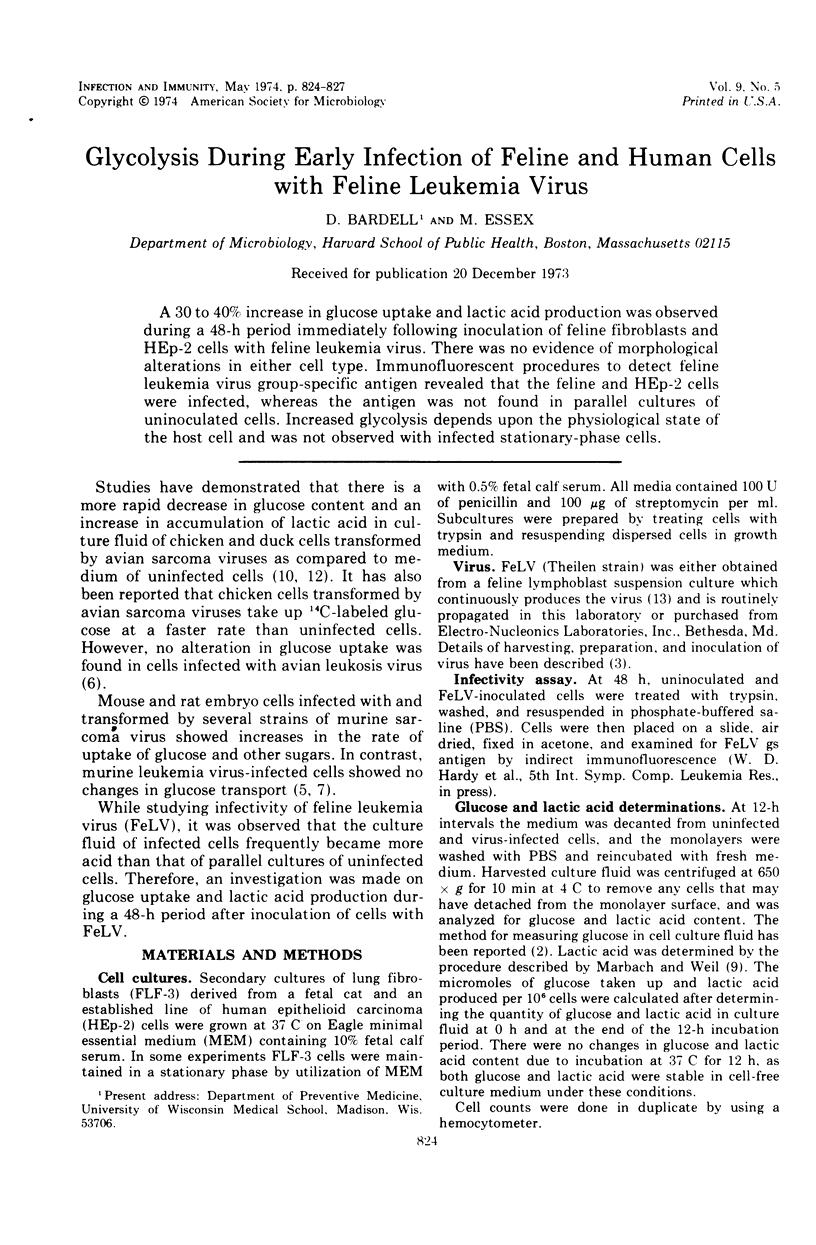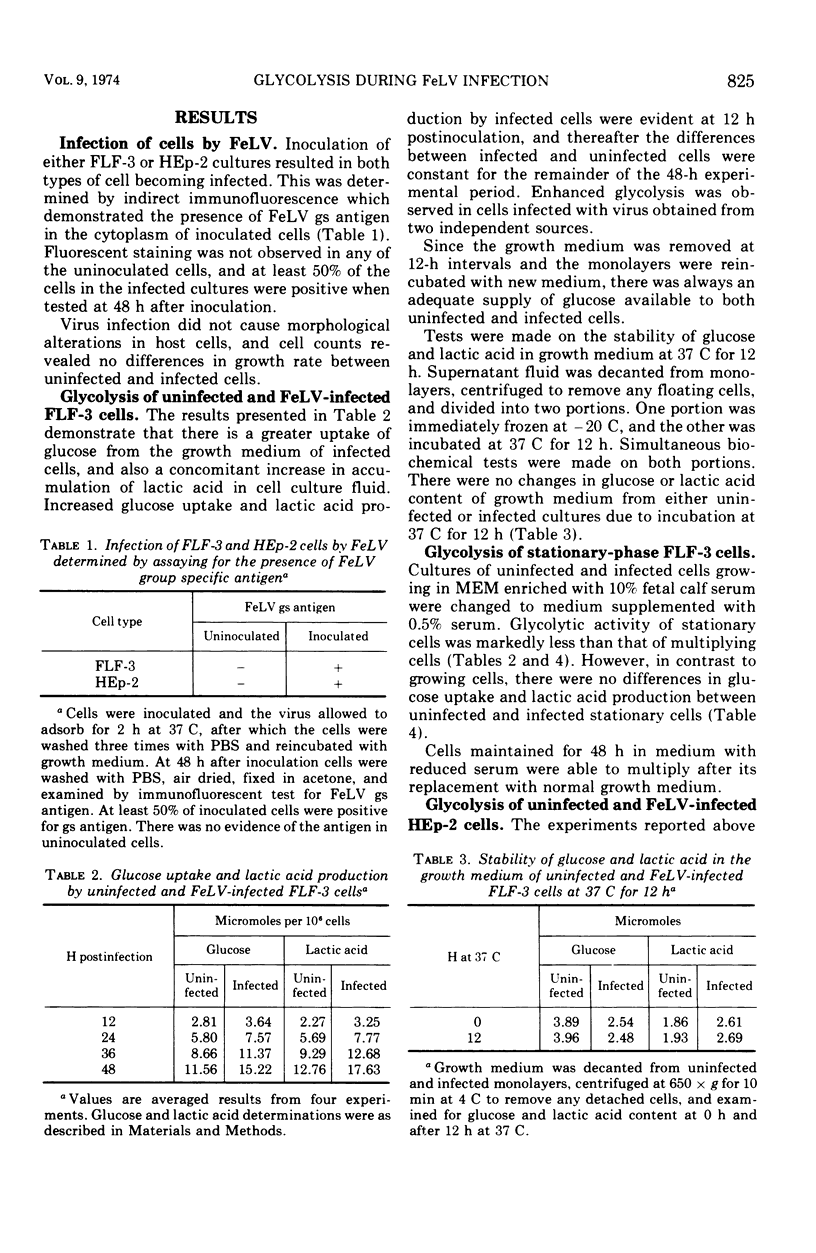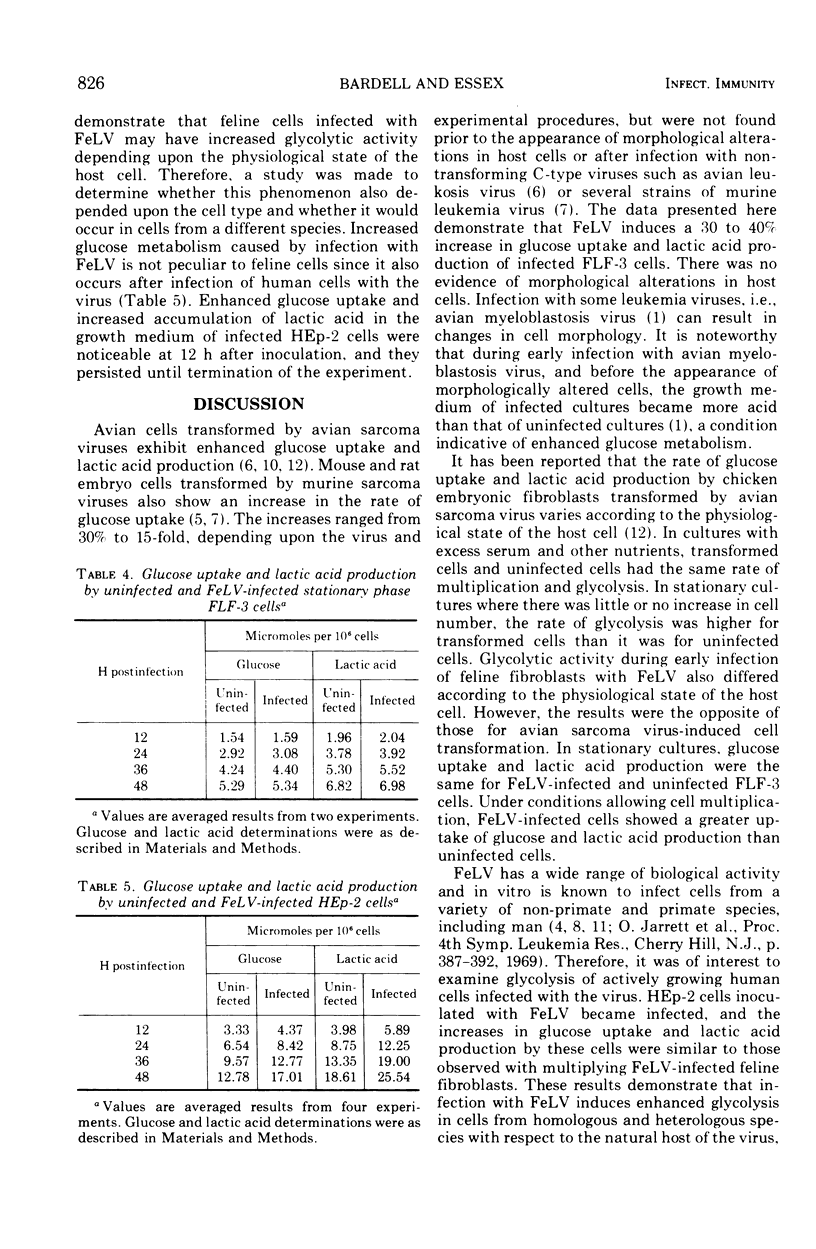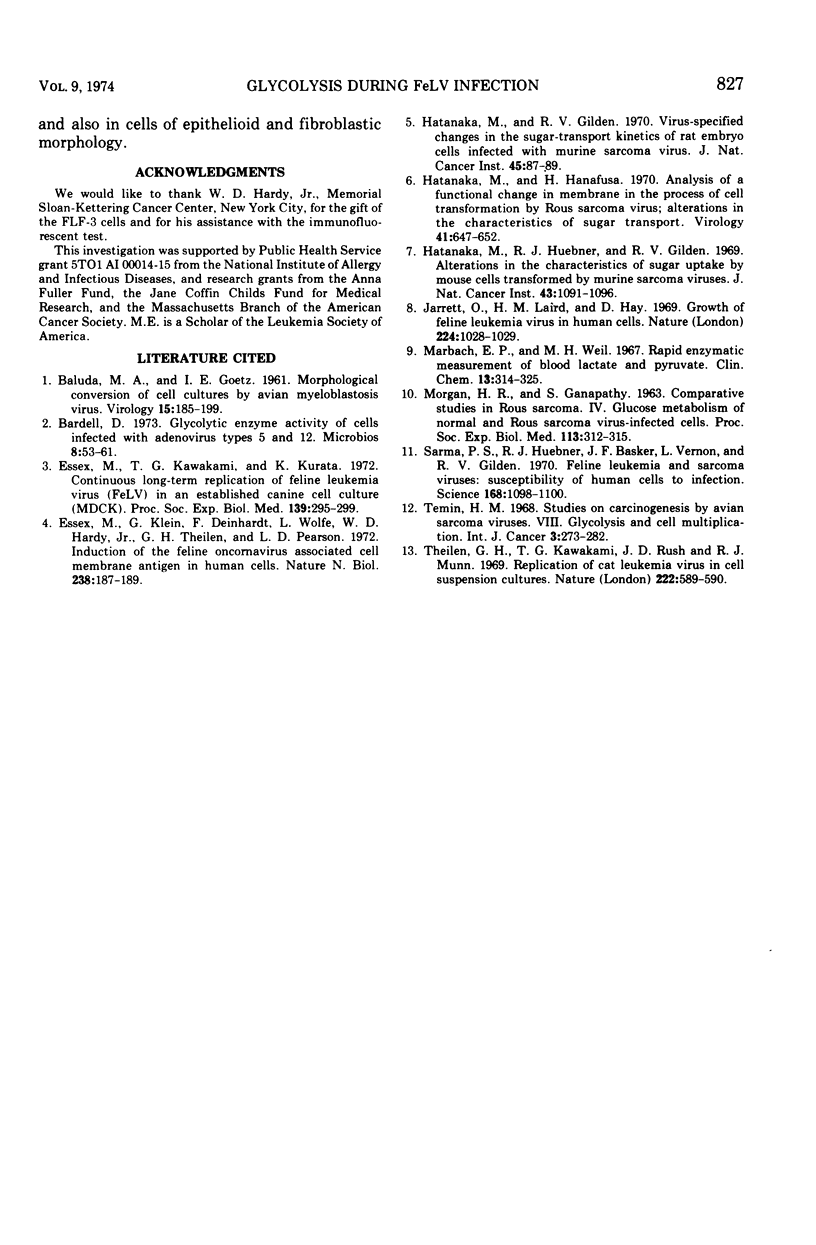Abstract
A 30 to 40% increase in glucose uptake and lactic acid production was observed during a 48-h period immediately following inoculation of feline fibroblasts and HEp-2 cells with feline leukemia virus. There was no evidence of morphological alterations in either cell type. Immunofluorescent procedures to detect feline leukemia virus group-specific antigen revealed that the feline and HEp-2 cells were infected, whereas the antigen was not found in parallel cultures of uninoculated cells. Increased glycolysis depends upon the physiological state of the host cell and was not observed with infected stationary-phase cells.
Full text
PDF



Selected References
These references are in PubMed. This may not be the complete list of references from this article.
- Assem E. S., Schild H. O. Inhibition by sympathomimetic amines of histamine release by antigen in passively sensitized human lung. Nature. 1969 Dec 6;224(5223):1028–1029. doi: 10.1038/2241028a0. [DOI] [PubMed] [Google Scholar]
- BALUDA M. A., GOETZ I. E. Morphological conversion of cell cultures by avian myeloblastosis virus. Virology. 1961 Oct;15:185–199. doi: 10.1016/0042-6822(61)90234-3. [DOI] [PubMed] [Google Scholar]
- Bardell D. Glycolytic enzyme activity of cells infected with adenovirus types 5 and 12. Microbios. 1973 Jun-Aug;8(29):53–61. [PubMed] [Google Scholar]
- Essex M., Kawakami T. G., Kurata K. Continuous long-term replication of feline leukemia virus (FeLV) in an established canine cell culture (MDCK). Proc Soc Exp Biol Med. 1972 Jan;139(1):295–299. doi: 10.3181/00379727-139-36129. [DOI] [PubMed] [Google Scholar]
- Essex M., Klein G., Deinhardt F., Wolfe L. G., Hardy W. D., Jr, Theilen G. H., Pearson L. D. Induction of the feline oncornavirus associated cell membrane antigen in human cells. Nat New Biol. 1972 Aug 9;238(84):187–189. doi: 10.1038/newbio238187b0. [DOI] [PubMed] [Google Scholar]
- Hatanaka M., Gilden R. V. Virus-specified changes in the sugar-transport kinetics of rat embryo cells infected with murine sarcoma virus. J Natl Cancer Inst. 1970 Jul;45(1):87–89. [PubMed] [Google Scholar]
- Hatanaka M., Hanafusa H. Analysis of a functional change in membrane in the process of cell transformation by Rous sarcoma virus; alteration in the characteristics of sugar transport. Virology. 1970 Aug;41(4):647–652. doi: 10.1016/0042-6822(70)90429-0. [DOI] [PubMed] [Google Scholar]
- Hatanaka M., Huebner R. J., Gilden R. V. Alterations in the characteristics of sugar uptake by mouse cells transformed by murine sarcoma viruses. J Natl Cancer Inst. 1969 Nov;43(5):1091–1096. [PubMed] [Google Scholar]
- Marbach E. P., Weil M. H. Rapid enzymatic measurement of blood lactate and pyruvate. Use and significance of metaphosphoric acid as a common precipitant. Clin Chem. 1967 Apr;13(4):314–325. [PubMed] [Google Scholar]
- Sarma P. S., Huebner R. J., Basker J. F., Vernon L., Gilden R. V. Feline leukemia and sarcoma viruses: susceptibility of human cells to infection. Science. 1970 May 29;168(3935):1098–1100. doi: 10.1126/science.168.3935.1098. [DOI] [PubMed] [Google Scholar]
- Temin H. M. Studies on carcinogenesis by avian sarcoma viruses. 8. Glycolysis and cell multiplication. Int J Cancer. 1968 Mar 15;3(2):273–282. doi: 10.1002/ijc.2910030213. [DOI] [PubMed] [Google Scholar]
- Theilen G. H., Kawakami T. G., Rush J. D., Munn R. J. Replication of cat leukemia virus in cell suspension cultures. Nature. 1969 May 10;222(5193):589–590. doi: 10.1038/222589b0. [DOI] [PubMed] [Google Scholar]


